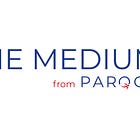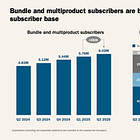Cool Sh*t vs. Corporate Politics: Why Product Expertise Matters
NYT's secret weapon is controlling shareholders with actual DTC experience, while the rest of legacy media are stuck with Baby Boomer executives managing DTC businesses they don't understand
[Correction: In yesterday’s essay, I mistakently used an outdated title for James Gorman. He is now Disney Chairman and Morgan Stanley Chairman Emeritus.]
Last year, I had a conversation with the former head of a streaming service about whether legacy media would ever figure out direct-to-consumer (DTC) models. He framed the problem as, "Are we going to be an industry that creates cool sh*t or not?"
After the past week of writing about ESPN, I realized that if we cut away all the noise, all the sales pitches, all the media coverage, all my analysis… I am arguing that “cool sh*t”—or really, cool DTC products—are not getting built around the IP and brands people love.
That sucks for paying customers to ESPN Select—like me—who have little reason to be excited about paying $18 more to watch their favorite teams and sports on ESPN Unlimited because it offers personalization, sports betting or merchandise.
I am happy to pay for cool sh*t. That can be as simple as The New York Times cooking app or as advanced as YouTube (I pay the annual subscription to YouTube Premium).
The example of The New York Times bundle model offers the contrast of what happens when a digital-native, product-savvy Gen X executive team reduces “a bundle of information” to its elements. “Cool sh*t” are apps that capture the inelastic demand that exists after everything else is assumed away.
When looking at this bundle through the lens of “cool sh*t”, there are two additional details worth discussing. First, it took 15 years of trial-and-error to construct. Second, the digital-native, product-savvy Gen X executive team involved three controlling shareholders of the business.
Not Overnight
The bundle and multiproduct subscription strategy did not emerge overnight. The story told to The Wall Street Journal is that the NYT’s strategy originated with the 2010 insight from executive David Perpich—now Vice Chairman, The New York Times Company & Publisher of The Athletic—that the metered paywall and bundled DTC offerings were the future of the NYT.
Its first product was the daily Crossword in 2008 (now the Games app). Its second product was recipes with the Cooking app in 2014. Its third product was purchasing The Athletic in 2022 to replace the broad national reporting of its Sports section with personalized news for sports fans about their favorite teams.





